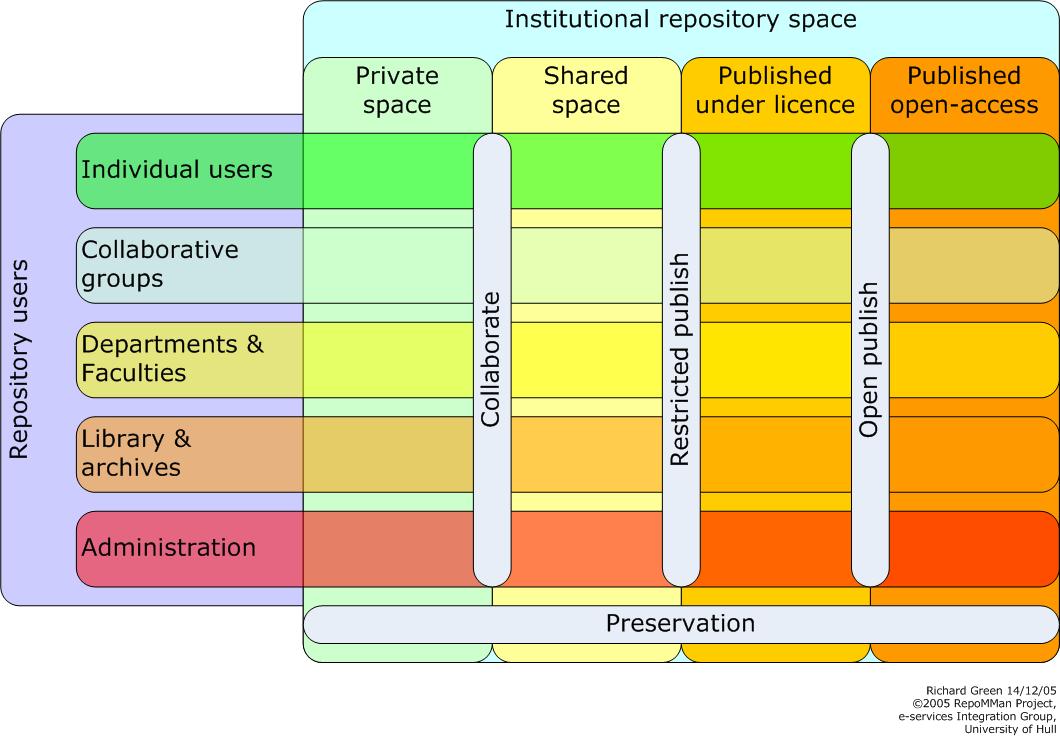Repositories Visualized
On 12/14/05 10:26 AM, Richard Green wrote on the sakai-library mailing list:
The RepoMman projectat the University of Hull, UK, is looking into the area
of workflow as related to an institutional repository. Hull sees a digital
repository as being a tool for its users, assisting them to develop a 'piece
of work' (a generic term intended to cover almost anything) from inception
to final form - supporting such things as development, collaboration and
versioning along the way. In other words, we see a repository as much more
than a container only for 'finished' digital objects. We are playing with
the acronym 'AMP' (access, management, preservation) to describe some of the
related functionality.
You and I are on the same page, Richard (it helps, of course, that we've
talked before on this topic) -- our Ohio repository is not only for
works that are "done" but also for works-in-progress. Coming from the
librarian perspective (it is hard to avoid since I work for a consortium
of higher education libraries), I think of it as stewardship of
knowledge as it is being created (to contrast it with the traditional
role of librarianship -- stewardship of knowledge that is published, or
"done").
The piece that I think is missing from your acronym, though, is the
notion of storage. In a marketing sense, we've been trying to think
through what the 15-second description of our project is, and at this
point we're working with:
The Ohio Digital Resource Commons will store, preserve, enable
discovery of and promote collaboration with the educational
and research materials of participating institutions.
The words still aren't quite right, but the concepts are all there:
storage, preservation, discovery, and collaboration. It doesn't have a
nice acronym like "AMP", either...
In an effort to help with some visualisation, I've developed the attached
diagram. Do others find this at all useful? Clearly, different
institutions might have different user categories down the left; indeed, it
might be useful to produce sub-diagrams with each of the lower categories of
user broken down into individual job descriptions?
This is a great diagram -- and it gets to the heart of many of the
concepts I've been trying to get across to our own community. The only
issue I would bring up, and perhaps this is strictly a North American
thing, is that the term "Institutional Repository" has become too
synonymous with "dSpace" and so is really lost as a generic term-of-art.
I prefer to drop the term "institutional" (after all, it clashes
somewhat with the Individual-Users/Private-Space concept) and use the
phrase "Content Repository".
Attached is a different perspective on this -- the repository as the
fundamental digital object layer upon which many of our existing
services rest. It attempts to convey the concept of an object
repository as a generic tool and the services on top of them as
specialized ingestion, presentation, and business rules layers. You can
also see this graphic in the context of a presentation:
http://drc-dev.ohiolink.edu/presentations/200510-summit/#slide1
(Press the space bar to step through the building up of the case for a
general digital object repository.)

